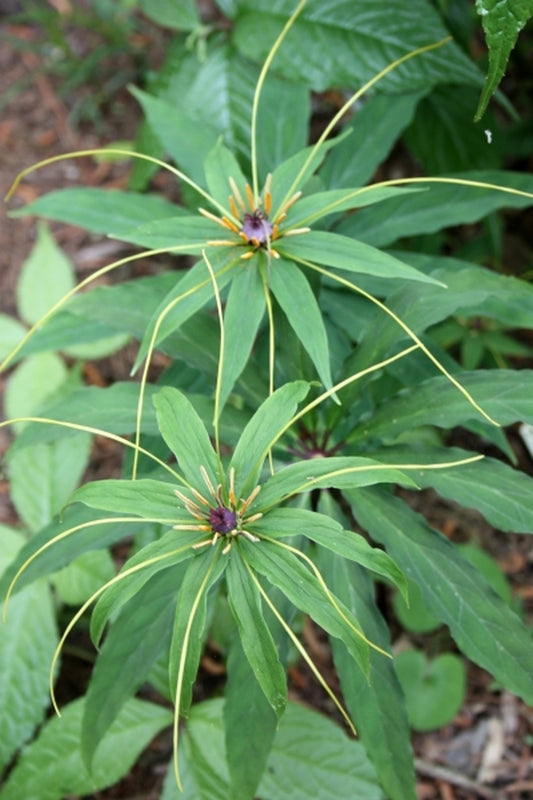Cultivation of paris is similar to trilliums...woodland conditions such as deep, well-drained, humus-rich soil with a slightly acid pH. Paris plants do not like to be disturbed once planted.
-
Paris polyphylla
Item #: 9313
Zones: 5a to 8b
Dormancy: Winter, Summer, Fall
Height: 24" tall
Culture: Light Shade to Shade
Origin: China
Pot Size: 3.5" pot (24 fl. oz/0.7 L)
Regular price $27.00Regular priceUnit price per
More Information About Paris
Did you know that Paris is in Asia? No, really...it is. I'm talking about the plant genus Paris, of course. The genus Paris contains 24 species of herbaceous plants that are native all over Asia and into Europe. The center of paris species diversity is China, where 22 of the 24 species can be found. These plants are small, woodland herbaceous perennials that grow from a rhizome to form a colony.
Paris (the Asian one) is closely related to the mostly American genus, Trillium. Both paris and trillium share the same types of habitats and general morphology, differing only in the number of petals and leaf sections. The most widely grown species is Paris quadrifolia, a European species, followed by Paris polyphylla and Paris japonica. However, there are many beautiful but rarely used species and we hope to introduce you to some of them. Be patient, because paris take 7 years from seed to flower.
How to Grow and Care for Paris
Cultivation of paris is similar to trilliums...woodland conditions such as deep, well-drained, humus-rich soil with a slightly acid pH. Reportedly, paris plants do not like to be disturbed once planted and may lie fallow for a season after initial planting or transplanting, but we have found this to be a myth. Only when the rhizomes are allowed to dry out excessively do they skip a season or die completely. Be very wary of buying dried rhizomes as few ever grow.


